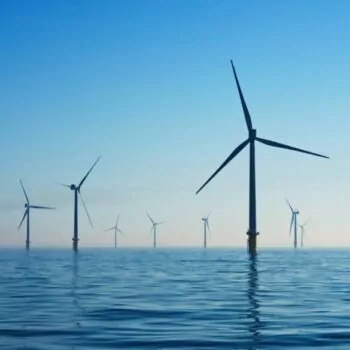At the end of 2008 E3G was asked to think about how, if the UK were to apply a fiscal stimulus to the UK economy, it could be used to stimulate green investment. It quickly became clear that the institutional framework required to quickly and efficiently push public money out into the economy was missing in the UK and the idea of a Green Investment Bank was born.
In March 2009, E3G and Climate Change Capital published a series of papers looking at ways in which the Government could grasp the economic opportunity of the low carbon transition to mobilise private funds in a risk-averse market into public purpose activities. This included a paper entitled Financing the UK’s Low Carbon Transformation which was the first policy paper to propose the establishment of a Green Infrastructure Bank to “catalyse private sector investment through the effective and efficient use public finance to implement low carbon infrastructure investment through a variety of public/private finance approaches”.
Inspired by this analysis, Friends of the Earth also began a campaign in the same month to develop business support to set up a Green Investment Bank. The proposal for a GIB was their main recommendation in the lead up to the Budget at the end of March 2009. Friends of the Earth coordinated a letter to the Guardian just before the Budget from over 20 companies from the green business sector supporting the proposition.
While the UK Government at that time did not take up the proposals, a wider debate was seeded and led to a series of related papers being published − notably by the Environmental Audit Committee, Aldersgate Group, Green Alliance and Policy Exchange.
In Autumn of 2009 some a major political breakthrough was made. In October 2009 the Liberal Democrats put forward a proposal for a UK Infrastructure Bank. In November 2009, the then Shadow Chancellor George Osbourne announced that the Conservative Party would be consulting on the creation of a Green Investment Bank. This announcement was followed by the creation of a high profile working group − the Green Investment Bank Commission − in February 2010, chaired by Bob Wigley, Chairman of Yell Group Plc. Both E3G and Climate Change Capital were selected to become members of the Commission, which was charged with providing independent advice to the Conservative Party on the role, scale and focus for the Bank.
At the end of 2009 the Green Investment Bank campaign, funded by the European Climate Foundation, was transferred from Friends of the Earth to E3G and branded as the Transform UK initiative. The aim of Transform UK is to coordinate alliance campaigns, including cross sector support from business, financial institutions, NGO’s and unions, to accelerate investment into the low carbon economy. The first major campaign for Transform UK was the creation of the Green Investment Bank.
In the Budget in March 2010 the Labour Government announced their intention to set up a Green Investment Bank. There was now cross party consensus on the need to set up a green public bank and all three parties included proposals to set one up in their General Election manifestos ahead of the election in May 2010.
Following the election the Conservative–Liberal Democrat coalition Government published a Coalition Agreement and this included the proposal to set up the Green Investment Bank.
At the end of May 2010, following the UK’s General Election, E3G published ‘Green Infrastructure Bank, Green Bonds and Policy’ outlining the role the GIB could play in accelerating the UK’s low carbon transformation, including more detailed thinking on the role of green bonds in scaling up available capital and in driving energy efficiency investment via the GIB in particular. These papers had formed the basis of E3G’s advocacy work on the GIB and set out a framework for thinking about how the bank should be set up, operate and identify priority projects to ensure it effectively manages the tension between delivering public good and acting as a commercial organisation without crowding out private capital.
In July 2010 the Green Investment Bank Commission’s report ‘Unlocking Investment to Deliver Britain’s Low Carbon Future’ was published. The Commission recommended that the GIB be established to act in the public interest to identify and address market failures and investment barriers over the long term. The report stated the GIB should sit alongside the Committee on Climate Change, which advises Government on legally binding climate change targets, and provide financial advice to Government on climate change-related investment issues.
In August 2010, the UK Government formally set up a Government Green Investment Bank Working Group. In September 2010 an independent report by Ernst & Young indicated that initial capitalisation of £4 billion to £6 billion over four years was needed for a credible institution to be established. In October 2010, under the Comprehensive Spending Review, £1 billion was allocated as start up capital. In March 2011 a further £2 billion was allocated from the UK Budget to the Bank, bringing the total capitalisation to £3 billion.
In October 2010 the Parliamentary Environmental Audit Committee set up an inquiry into the GIB, publishing its final report in March 2011. The Committee strongly supported the need to set up a proper public bank which was well capitalised and allowed to borrow from the capital markets. The Committee also agree with the E3G/Transform UK alliance proposal that the GIB should be set up in legislation.
Following this, in May 2011, the Government’s ‘Update on the Green Investment Bank’ was published. This document sets out the GIB’s mission as follows.
The GIB’s mission will be to accelerate private sector investment in the UK’s transition to a green economy. Its initial remit will be to focus on green infrastructure assets. It will work to a ‘double bottom line’ of both achieving significant green impact and making financial returns. It will also operate independently and at arm’s length from Government, which will agree its strategic priorities over Spending Review periods.”
Details of the high level business model and early sector focus for the GIB were set down, including:
- The GIB will support the Government’s green policy objectives and will focus initially on offshore wind, waste and energy efficiency sectors;
- The GIB will play a key role in addressing financial market failures and use a range of product interventions to achieve its aims;
- The GIB will be set up as an enduring institution and will be enshrined in Statute;
- The GIB will have powers to borrow and will apply for a banking license.
During 2011 and 2012 – pre-State Aid clearance –– the UK GIB operated with a skeleton staff as a ‘shadow’ institution called UK Green Investments, headed by Sir Adrian Montague. During this time it was able to indirectly invest in the UK economy and allocated £100m to privately managed funds focused on energy efficiency and £80m to privately managed funds focused on waste infrastructure. Once State Aid clearance had been received the GIB commenced full operations, so that it is now able to directly finance projects on a debt and equity basis.
In July 2012 the GIB’s Chairman, Lord Smith of Kelvin, was appointed. Lord Smith has significant experience of working in the energy and finance sector. He is currently Chairman of Scottish and Southern Energy and the engineering firm the Weir Group. He also holds positions on a variety of Boards including the private equity firm 3i and Standard Bank Group Ltd.
The GIB’s CEO and Board were announced in September 2012. Shaun Kingsbury was appointed as the Chief Executive. He joins the UK GIB from the private equity firm Hudson Clean Energy Partners where he was responsible for its European activities. Six new Non-Executive Directors have also been appointed. Between them they have a wealth of experience with backgrounds in universities, business, investment funds, equity finance and the low carbon sector. They are:
- Professor Dame Julia King
- Fred Maroudas
- Tom Murley
- David Nish
- Isobel Sharp
- Tessa Tennant
In the autumn of 2011, Client Earth was commissioned by Transform UK to set out a draft bill and case for setting up the GIB in legislation – ‘Towards the Green Investment Bank Act’.This was published and launched at an event in Parliament in November 2011. In May 2012 the Government confirmed that the GIB would be enshrined in legislation in the Enterprise and Regulatory Reform Bill. The Bill was published in June 2012 and aimed to give the GIB a clear green mandate, key financial powers, operational independence and permanence.
Throughout the legislative process E3G, Client Earth and partners within the Transform Coalition argued for two major amendments to the Bill. First, an amendment that would have allowed the GIB to borrow from 2015 at the latest. This was in response to a Treasury-imposed restriction that the GIB would not be allowed to borrow until the national debt was declining as a percentage of GDP. Second, an amendment that explicitly required the investments made by the GIB to help, not hinder, delivery of the UK’s carbon reduction budgets – as recommended by the Committee on Climate Change.
The Government refused to include a date in the legislation on when the GIB would be allowed to borrow but Government Ministers did state on the record in Parliament for the first time that the GIB would be allowed to borrow independently from the capital markets. This was confirmation that the GIB would be allowed to develop as a proper public bank. The Government also promised in Parliament to submit a state aid application to the European Commission before the election in May 2015 seeking permission for the GIB to be able borrow from the capital markets.
The campaign also persuaded the Government to put forward an amendment to the Bill which stated that the overall investments of the Green Investment Bank had to support a reduction in greenhouse gas emissions. This built in green ambition into the Bill for the first time and provided confirmation that the GIB could not be hijacked in the future as a general high carbon infrastructure bank.
With the granting of Royal Assent and the entry of the Enterprise and Regulatory Reform Act into UK law, the Transform UK campaign to set up the Green Investment Bank is now completed. We leave behind us the first dedicated Green Investment Bank in the world. But with the UK facing a triple dip recession, questions remain over when exactly the GIB will finally be able to borrow from the capital markets. That said, there is significant and very public political momentum behind the idea that borrowing should be brought forward to enable the GIB to play a full part in driving the UK’s economic recovery through accelerating investment into UK infrastructure. Circling back to 2009, when the idea of the GIB was first proposed, this was the exact reason we argued the GIB was needed.
This campaign leaves a legacy beyond simply the UK’s Green Investment Bank. In 2012 the Australian Government, inspired by the development of the GIB, set up Aus$10 billion Clean Energy Finance Corporation. China, the US, Japan and the Netherlands are also considering setting up similar institutions. Green public banks are set to now play a major role in helping to leverage private investment into delivering a global low carbon economy.
Official GIB webpage
The UK Government’s Green Investment Bank website with relevant materials can be accessed at https://www.bis.gov.uk/greeninvestmentbank


